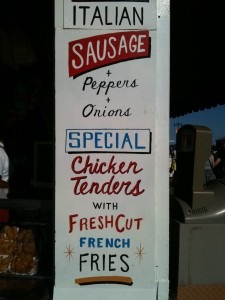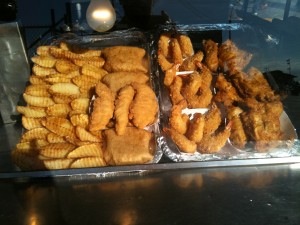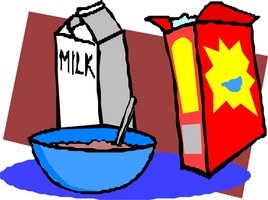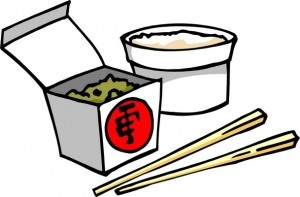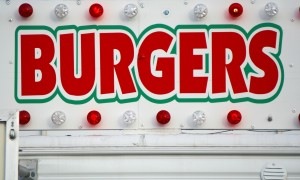Fried clams.
Corn dogs.
Fried dough.
Do you remember when you could eat all of these and still feel great? Do you remember when you could eat all of these and not gain weight or have it show in all kinds of places you wish it didn’t?
A Staple Of The Standard Western Diet
Fried, fatty food has become a staple of the standard Western diet.
Don’t you see potato chips, French fries, fried chicken, fried mozzarella and fish sticks just about everywhere you turn? FYI: in terms of calories – fat, of any kind, has 9 calories per gram compared to protein and carbs at 4 calories per gram.
What Does “Fried” (Food) Mean?
Frying – or cooking food in hot fat over moderate heat –includes sautéing, stir-frying, pan-frying, and deep-fat frying. Sautéing uses the least amount of oil and the oil doesn’t cover the food as it’s being cooked. Deep-fat frying uses the most oil and the food is submerged as it’s cooked.
Frying is actually called a dry cooking method because it’s done without water. Because of the high temperature and the high heat conduction of oil, food cooks very quickly.
When done properly, deep-frying shouldn’t make food really greasy because the hot oil heats up the moisture inside the food making the food steam from the inside out. If the oil is hot enough and the food isn’t in the oil for too long the oil that penetrates stays around the outer surface of the food and keeps the food’s moisture inside. But, if the food is cooked in the oil for too long, a lot of water is lost and the oil begins to penetrate the food.
The ideal temperature range for deep frying is 350°-375°F. If the temperature is lower than 325° oil will be absorbed into the food. Temperatures much higher than 375° can cause additional oxidation of the oil (which is not healthy) and produce dried out food. A cautionary note: a number of restaurants reuse their cooking oil over and over which leads to decomposition of the oil and partial and unhealthy oxidation.
What’s The Problem With Eating Fried Food?
Long-term, a fatty diet has been implicated in a number of potentially unhealthy side effects. Short-term, a high fat meal can make you feel not so great.
Fried foods tend to slow down the emptying of the stomach causing you to feel full and bloated – or they move undigested through the intestinal tract too quickly, possibly leading to diarrhea. They can also cause acid reflux and heartburn. Does the term “indigestion” come to mind?
Fried Foods By Any Other Name
On a menu, fried food is not always just called “fried” or “sautéed.” Here are some other descriptive terms:
- Pan-fried
- Deep-fried
- French-fried
- Fricassee
- Frizzled
- Sizzled or sizzler
- Browned
- Crisped or crispy
- And frequently, anything battered – which is then fried
Astonishing, But True
While we’re used to fried potatoes and fish and meat, it is astonishing what else has been fried. Incredibly, in 2006 fried Coca Cola won “Most Creative” at the State Fair of Texas.
- Deep Fried Oreos
- Deep Fried Pickles
- Deep Fried Pizza
- Deep Fried Pop-tarts
- Deep Fried Spam, Deep Fried Mars Bars
- Deep Fried Cupcakes
- Deep Fried Strawberries
- Deep Fried Olives
- Deep Fried Ice Cream
- Deep Fried Jam Sandwiches
